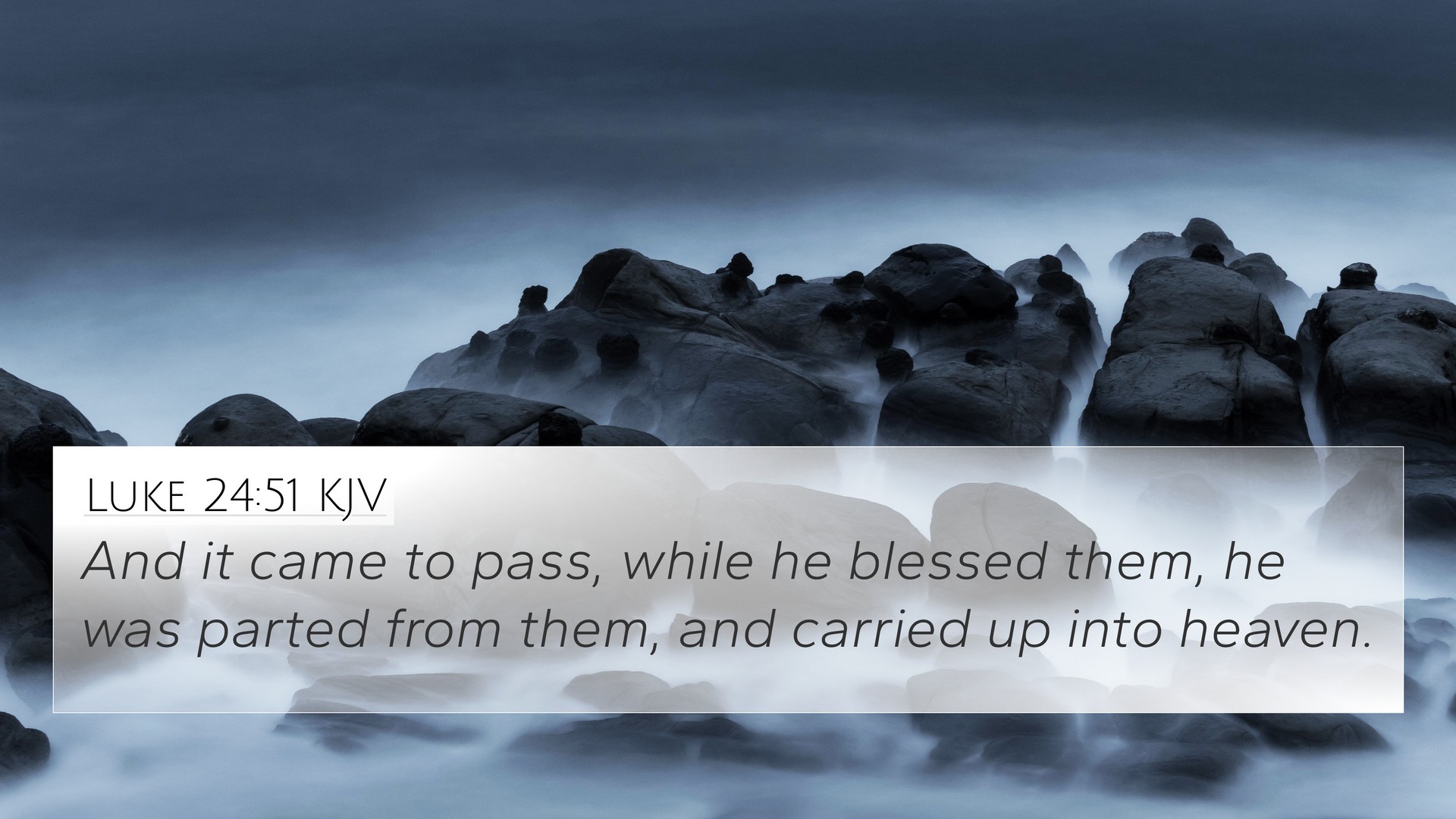Understanding Luke 24:51
Luke 24:51 states: "While he blessed them, he parted from them and was carried up into heaven." This verse marks a significant moment in the New Testament, capturing the ascension of Jesus Christ after His resurrection. Below is a summary of insights from classic public domain commentaries, including those of Matthew Henry, Albert Barnes, and Adam Clarke.
Verse Meaning and Context
This verse occurs towards the end of the Book of Luke, where it transitions from Christ's earthly ministry to His heavenly reign. The act of ascending into heaven signifies a completion of His work on earth and a promise of His return.
Spiritual Significance
The ascension not only marks the exaltation of Christ but also serves as a confirmation of His divine nature and His role in the Trinity. The act of His blessing before departure illustrates His compassion and love for His disciples.
Commentary Insights
- Matthew Henry: Henry emphasizes the importance of the blessing as a symbol of divine favor. He notes that the Lord's ascension is both an end and a beginning—an end to His earthly presence and a beginning of His heavenly intercession.
- Albert Barnes: Barnes highlights that the ascension assures believers of Christ's authority and complete victory over sin and death. He points out that the very act of being 'carried up' signifies the divine will and power at work.
- Adam Clarke: Clarke discusses the significance of the disciples' witness during this event. He reflects on their subsequent actions, noting that they returned to Jerusalem with great joy, indicative of their faith in the promises made by Christ.
Bible Cross-References
This verse ties into various other scriptures that deepen the understanding of its significance. Here are some important cross-references:
- Acts 1:9-11: Details the ascension and the promise of Christ's second coming.
- Mark 16:19: Affirms that Jesus was received up into heaven and sat at the right hand of God.
- Ephesians 4:8: Mentions the gifts given by Christ after His ascension.
- Luke 9:51: Refers to the time when Jesus steadfastly set His face to go to Jerusalem, indicating the purpose of His mission.
- John 14:2-3: Jesus speaks of preparing a place in heaven for His followers.
- Hebrews 1:3: Describes how Christ is seated at the right hand of the Majesty on high.
- Philippians 2:9-11: Declares that God has highly exalted Christ and given Him a name above every name.
Thematic Connections
The ascension of Jesus emphasizes themes of hope and the continuity of His ministry through the Holy Spirit, which He promised to send to His disciples. This transition connects to a broader theological dialogue connecting events in the New Testament with prophetic insights from the Old Testament.
- Links between prophetical assurances, such as Isaiah 53:12 about the suffering servant and Daniel 7:13-14 about the Son of Man receiving dominion.
- Reflections from Psalm 68:18 highlight the ascension and triumphant entry of Christ.
Conclusion
Luke 24:51 serves a crucial role in understanding the Christian faith, representing the culmination of Jesus’ earthly ministry and the onset of the Church’s mission under the guidance of the Holy Spirit. Through cross-referencing scripture, we see a fuller picture of the significance of this event and its implications for believers. The connections drawn between Bible verses deepen the understanding of themes central to the faith and encourage further study of God's Word.
Further Study and Resources
For those seeking deeper engagement with the Scriptures, various tools for Bible cross-referencing can assist in identifying connections between passages. Resources such as a Bible concordance or a cross-reference Bible study guide can enhance one's understanding. Methods for cross-referencing Bible study open avenues for recognizing thematic ties across the Old and New Testaments, enriching the overall study of the Word.









